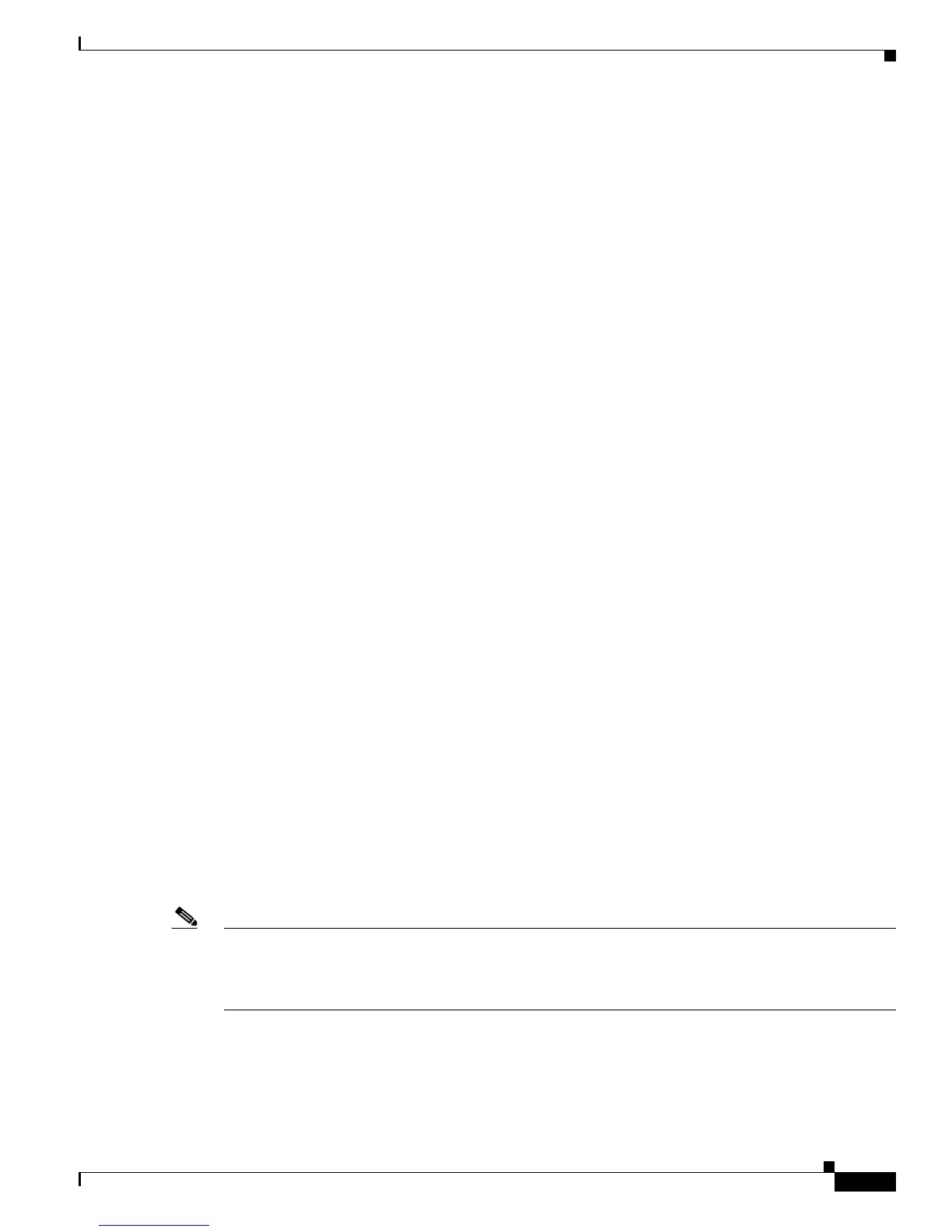6-21
Cisco 10000 Series Router Quality of Service Configuration Guide
OL-7433-09
Chapter 6 Policing Traffic
Committed Bursts and Excess Bursts
Committed Bursts and Excess Bursts
Unlike a traffic shaper, a traffic policer does not buffer excess packets and transmit them later. Instead,
the policer executes a “send or do not send” policy without buffering. During periods of congestion,
proper configuration of the excess burst parameter enables the policer to drop packets less aggressively.
Therefore, it is important to understand how policing uses the committed (normal) and excess burst
values to ensure the router reaches the configured committed information rate (CIR).
Burst parameters are based on a generic buffering rule for routers, which recommends that you configure
buffering to be equal to the round-trip time bit-rate to accommodate the outstanding TCP windows of all
connections in times of congestion.
The following sections describe committed bursts and excess bursts, and the recommended formula for
calculating each of them:
• Committed Bursts, page 6-21
• Excess Bursts, page 6-22
• Deciding if Packets Conform or Exceed the Committed Rate, page 6-23
Committed Bursts
The committed burst (bc) parameter of the police command implements the first, conforming (green)
token bucket that the router uses to meter traffic. The bc parameter sets the size of this token bucket.
Initially, the token bucket is full and the token count is equal to the committed burst size (CBS).
Thereafter, the meter updates the token counts the number of times per second indicated by the
committed information rate (CIR).
The following describes how the meter uses the conforming token bucket to send packets:
• If sufficient tokens are in the conforming token bucket when a packet arrives, the meter marks the
packet green and decrements the conforming token count by the number of bytes of the packet.
• If there are insufficient tokens available in the conforming token bucket, the meter allows the traffic
flow to borrow the tokens needed to send the packet. The meter checks the exceeding token bucket
for the number of bytes of the packet. If the exceeding token bucket has a sufficient number of tokens
available, the meter marks the packet:
a. Green and decrements the conforming token count down to the minimum value of 0.
b. Yellow, borrows the remaining tokens needed from the exceeding token bucket, and decrements
the exceeding token count by the number of tokens borrowed down to the minimum value of 0.
• If an insufficient number of tokens is available, the meter marks the packet red and does not
decrement either of the conforming or exceeding token counts.
Note When the meter marks a packet with a specific color, there must be a sufficient number of tokens of that
color to accommodate the entire packet. Therefore, the volume of green packets is never smaller than the
committed information rate (CIR) and committed burst size (CBS). Tokens of a given color are always
used on packets of that color.
The default committed burst size is the greater of 2 milliseconds of bytes at the police rate or the network
maximum transmission unit (MTU).

